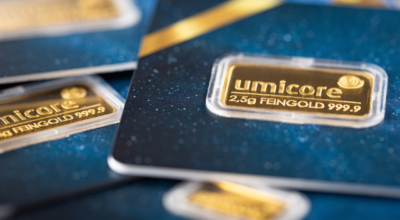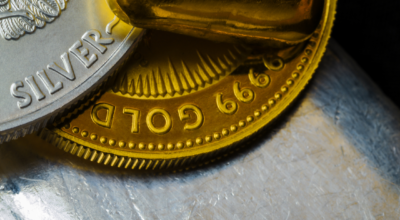High Gold-Silver Ratio Suggests Silver Price Rally
- InvestingHaven: Gold-to-Silver Ratio and Historic Silver Rallies
- Kitco: The gold market remains the superior safe haven as the world deals with rising debt, high inflation and recession risks
Image: hashtaginvesting.com
InvestingHaven: Gold-to-Silver Ratio and Historic Silver Rallies
InvestingHaven discusses in their article (June 11, 2023) the correlation between the gold-to-silver ratio and epic rallies in the price of silver. The gold-to-silver ratio compares the price of gold per ounce to the price of silver per ounce and has shown significant fluctuations over time. The article highlights a pattern where whenever the ratio enters the 80 to 100x range, it precedes substantial rallies in the price of silver.
The text mentions four notable instances when this pattern occurred: 1991, 2002, 2009, and 2020. In each of these cases, when the gold-to-silver ratio entered the 80 to 100x range, silver experienced significant price increases. These events demonstrated the potential for substantial returns and the importance of recognizing patterns in the precious metals market.
The article also emphasizes the recent occurrence of this pattern during the COVID-19 pandemic in 2020, where the gold-to-silver ratio once again entered the 80 to 100x range, leading to a remarkable rally in the price of silver. This reaffirmed the pattern observed over the past decades and further supported the idea that the gold-to-silver ratio can serve as an indicator for potential silver price movements.
The author concludes that the current gold-to-silver ratio, which has remained above 80x since early 2022, suggests that silver is undervalued compared to gold. While the ratio is not a timing indicator, it indicates that it’s only a matter of time until the price of silver starts reacting positively.
Kitco: The gold market remains the superior safe haven as the world deals with rising debt, high inflation and recession risks
The gold market is facing a perfect storm, writes Kitco (June 20, 2023), as the Federal Reserve maintains a hawkish bias and the global economy grapples with higher interest rates, rising inflation, and increasing debt. According to Tavi Costa, a portfolio manager at Crescat Capital, gold’s value as a portfolio diversifier will push prices well beyond $2,000 an ounce.
Costa sees three risks for the global economy that will support gold prices: the possibility of U.S. government default, a recession triggered by Federal Reserve tightening, and U.S. debt levels causing a bond market selloff. He points out that the inverted yield curve, with short-term yields surpassing long-term rates, is historically a signal to buy gold and sell the S&P 500.
Foreign buyers of U.S. debt are currently at a 19-year low, while the U.S. government needs to issue approximately $1 trillion in debt to replenish its funds. Costa believes that as rates move higher and the supply of debt increases, the Fed may become the buyer of last resort. In this scenario, tangible assets like gold are likely to be undervalued at only $2,000 an ounce.
Despite some investors shying away from precious metals, central bank gold buying remains strong, indicating a shift towards owning neutral assets amid de-globalization trends and increasing volatility in foreign exchange markets.
Costa highlights that gold represents a small percentage of global reserves compared to historical averages and argues that central banks would need to buy $3.2 trillion worth of gold to return to those levels. He also notes that gold is undervalued relative to the rest of the market, even after a 6% decline from its record highs.
To navigate the growing uncertainty and risks, Costa recommends creating more balanced portfolios. He suggests allocating around 30% to equities, 20% to fixed income, 30% to gold, and 20% to a broad commodity basket.
In summary, Costa predicts a favorable outlook for gold due to the global economic risks and undervaluation compared to other assets. He advises investors to consider gold as part of a diversified portfolio amid increasing uncertainty and market volatility.
If you’re looking to invest, Jalonom offers a wide selection of precious metals for sale, providing a secure and convenient way to purchase gold and silver.






